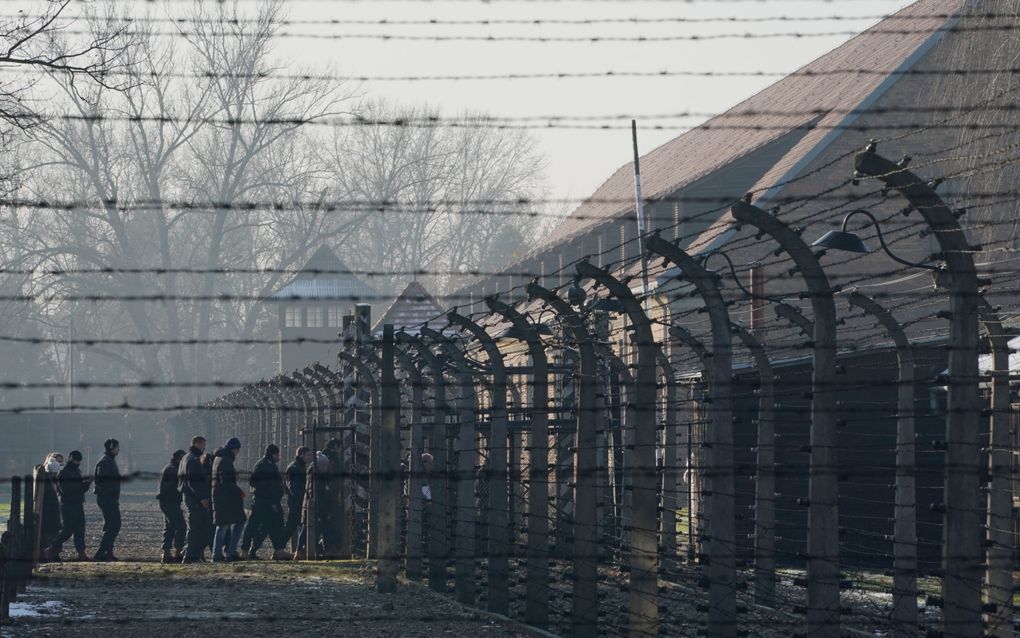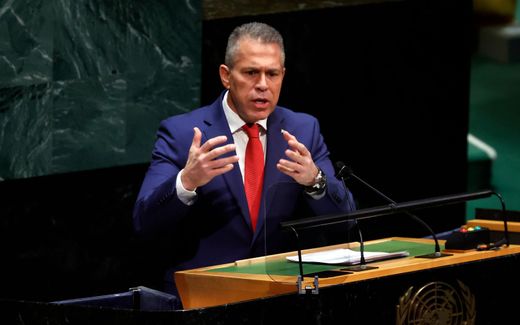Book review: On the other side of the barbed wire
21-01-2023
European Union
Aline de Bruin, RD

Visitors walk across the barbed wire fences of the Auschwitz. Photo AFP, Janek Skarzynski
European Union
More than 16 years after the huge sales success of "The Boy in the Striped Pyjamas", John Boyne is back with a sequel. In "All the Broken Places", the focus is on Bruno's sister, now 91-year-old Gretel. As a child of a Nazi commander, her life has been scarred by the guilt she carried with her after the war.
"Finally, they were ready. We were not completely bald; they had left enough ugly tufts and locks to make us look seriously disfigured. (...) I begged for mercy. Had others done the same, I wondered, as I sat safely in my house in that other place and played with my dolls? Had others begged as I did? Their pleas had gone unanswered while innocent, so why should mine be heard?"
Paris, 1946. Fifteen-year-old Gretel and her mother fled Germany after World War II. Her father has been hanged as a war criminal, and her mother is trying to escape a prison sentence. They make up false names, yet are soon discovered by Nazi hunters and then harshly shaved bald - a punishment that so-called "Kraut girls" had to endure all over the world after liberation.
The incident is the beginning of the overwhelming guilt that Gretel carries with her throughout her life. In "All the Broken Places", she looks back on her life as a now 91-year-old woman. She lives in London under a different name, speaks accentless English, has lied all her life about her origins and does not talk to anyone about her former escape from Germany. And certainly not about her father, commander of the Nazis' most notorious concentration camp, or the fate that befell her little brother Bruno.
Out-With
Bruno is the main character in John Boyne's earlier novel "The Boy in Striped Pyjamas" (2006). During World War II, he moves with his parents and sister to Poland, to a house with a high fence next to it, which shields Bruno from the strange people he sees moving there. He befriends the Jewish boy Shmuel behind that fence, a friendship with far-reaching consequences.
The 51-year-old Irish writer Boyne had planned to start work on the sequel with the story of Gretel immediately after the publication of "The Boy in the Striped Pyjamas". But the huge sales success so overwhelmed him that the Word document "Gretel's story" remained on his PC for years. Only during the corona pandemic did he cautiously start writing again. Over the years, he also took a milder view of Gretel's story, he said in an interview with the Belgian magazine Humo. "The older you get, the easier it is," he said.
His new novel is therefore written from a very different perspective: that of someone looking back on her life. This contrasts sharply with the naive tone of the little boy in Boyne's first book. Bruno initially has no idea that he now lives next to a death camp. He calls the camp he hears passed in conversations at the table "Out-With" and talks about the "Fury" who visited once. Slowly, he discovers more about the fate of the people behind the fence. "He wondered what could be going on in Out-With and whether it wasn't a terrible idea if it made people look so unhealthy."
It was precisely the childish tone that chopped into many readers' heads. As Bruno slowly starts asking more questions, you rediscover with him how terrible the situation in a death camp is. Those who have read the book feel the shock that is left behind.
Guilt
"All the Broken Places" centres on Bruno's older sister. She has already experienced much more consciously what was happening in the war. For instance, her father took her to the camp once. She knew what was happening there. At the time, she took that situation more or less for granted, but after the war, the questions came. And the guilt, which she continued to struggle with all her life. "Guilt haunted you in the streets, disrupting the most mundane moments with the memory of days and times when you could have done something to prevent tragedy but had chosen to do nothing, when you chose to play with your dolls instead. Or sticking pins in the map of Europe to mark the troops' progress."
Boyne raises confrontational questions with Gretel's story, which is unfortunately marred by a few curses. To what extent can Gretel escape from something she witnessed, even though she was young? How does she reconcile the image of a father she loves with his position as camp commander? And by extension, what would you do as a reader at such a young age? As a 12-year-old, can you already take responsibility for the things you see?
The power of good literature is to make you think about those questions. Not everything is black or white or a question that is easy to answer. Good stories are all about discussion; they make you engage with each other.
Criticism
That discussion certainly came after the release of Boyne's first book. Besides rave reviews, he also received a lot of criticism, as often happens when a story has a significant impact. For instance, Bruno was said to be far too naive for a nine-year-old boy. Could he really not know what was going on in the camp? The story would also be factually incorrect because, in reality, most young children were sent to the gas chamber immediately after arriving in Auschwitz or used for terrible medical experiments. So Bruno could not have befriended the Jewish boy Shmuel at all.
The altercation over the "factual inaccuracies" in the book ran so high at one point that the Auschwitz Museum even tweeted that the book "should be avoided by anyone studying the Holocaust or teaching about the war".
The author himself responded to the criticism by stating that the story is a fable, an abstract version of reality. Moreover, there is a difference between non-fiction and literature. Those who realise they are reading fiction written from a child's perspective will forgive Boyne's factual inaccuracies. Though the question remains: does every reader realise this sufficiently?
In "All the Broken Places", in a retrospective, he briefly explains the young Jewish boy's presence in the camp. The Nazis allowed Shmuel to stay alive because he had to clean bullet casings; with his small fingers, he could do that more easily than the bigger men.
Although his new book has just been published, it has also attracted some criticism; for instance, it is said to sympathise too much with Nazis.
But those who think this way have yet to understand the message of the story, Boyne believes. In an epilogue, he writes: "Like the rest of humanity, Gretel is all flaws and contradictions. She is capable of moments of great good but also horrific cruelty. I hope readers will think about her long after they have finished the book and perhaps wonder what they would have done in her place. (...) Writing about the Holocaust is a fraught activity, and any novelist who ventures into it assumes an enormous responsibility. Not for imparting knowledge, which is the task of non-fiction, but for exploring emotional truths and authentic human experiences."

All the broken places. John Boyne; Pamela Dorman Books; 400 pp; €23,39. The Dutch version of the book was reviewed.
This article was translated by CNE.news and previously published in Dutch daily Reformatorisch Dagblad.
Related Articles





